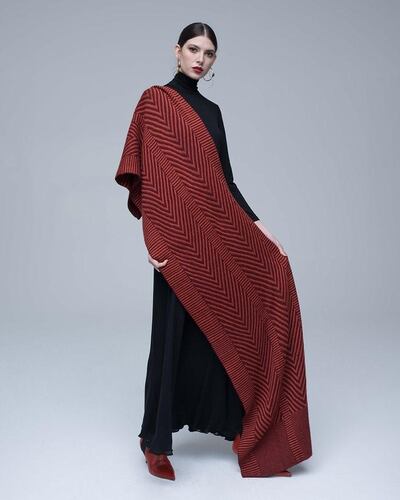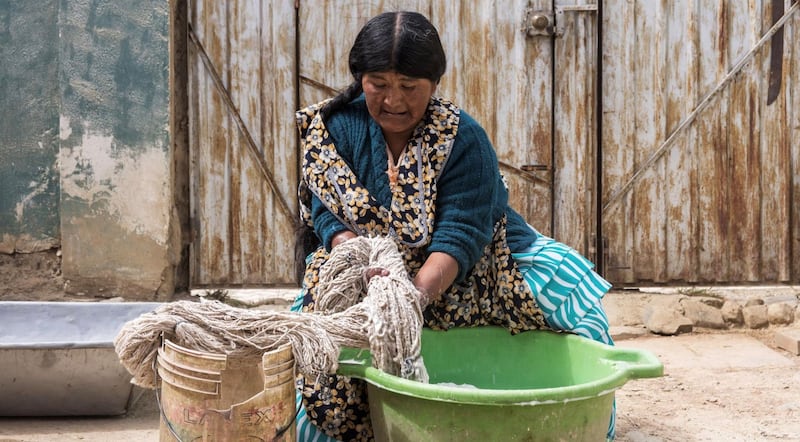The Merriam-Webster dictionary defines luxury as "a condition of abundance or great ease and comfort; something adding to pleasure but not absolutely necessary". The criteria for a luxury product is that it should be low in supply – limited-edition or rare – and high in cost, mostly because of the amount of time invested by a skilled craftsperson.
Luxury fashion has always been about craftsmanship, which is generally expected to be from the West, rather than the developing world. The immediate associations are Florentine leather craftsmen, finely woven Italian wools, and French metiers that specialise in embroidery, pleating and handmade flowers for the haute couture industry. However, this reliance on the limitation of production and value of rarity – real or manufactured – has been somewhat lost amid the democratisation of luxury, the introduction of fashionable lower-priced accessories, and the expansion of retail to a vast global network of stores.

Long before becoming the publicly traded global financial powerhouses they currently are, the great European couture maisons began life as small family businesses plying their trade to the French court and British aristocracy. Their craft was based on skill, often handed down over generations within families and communities, using local materials and taking many hours of dedicated labour to produce.
Global artisans, from Maasai beaders to Malian Bogolan hand weavers, satisfy the same criteria, yet they are not generally valued in the same way as their European peers. Western artisanship is still considered to be the pinnacle of contemporary luxury. Ironically, in contrast to the democratisation and outsourcing of western luxury, traditional artisanship in the developing world remains authentic, offering something special and unique, in the same way as haute couture.
Among the designers and brands at the premium end of the industry, and which are working with traditional artisans from other corners of the globe, is Moowon. It is
an artisanal e-commerce site that features the handiwork of master craftspeople across a range of product lines, from tableware to accessories. It exists to showcase the skills of the men and woman who are reviving the beauty and authenticity of vanishing arts. The online store sells limited-edition pieces discovered on travels around the world, and the site is accompanied by an online magazine that inspires respect for the things people make.
Maiyet, meanwhile, is a modern ethical fashion brand from the United States, which is recognised for its commitment to positive social change. It works with craftsmen from India, Indonesia, Kenya, Mongolia and Peru, and has a womenswear collection featuring clothing, scarves, clutches and jewellery, which showcase a range of skills including embroidery, woodwork, silk screening and beading. The brand promotes sustainability through its use of traditional craft and believes that fashion has an obligation to create positive change.
British designer Vivienne Westwood, meanwhile, produces the Ethical Africa collection, a unisex range of bags that comprise rucksacks, totes and clutches inspired by African fabrics, colours and embroideries. The bags are produced using recycled canvas, reused roadside banners, unused leather cut-offs, recycled brass and discarded metal padlocks and car parts. Working in partnership with the International Trade Centre, the company employs impoverished communities to support the work of micro-producers from marginalised African communities.
Another brand utilising traditional artisanship is VOZ, named after the Spanish word for voice, which was founded in 2012. It empowers artisans creatively, culturally and economically through a collaborative business model that supports traditional textile-making arts. Located in Chile, the brand works with the indigenous Mapuche women to create clothing and accessories featuring the traditional hand-weaving techniques of the region.
The need for companies to embrace sustainable development and ethical business practices, combined with the continued loss of traditional handcrafted techniques, potentially positions global craft at the future of the luxury industry. Culture, history and heritage are priceless, and the authenticity of products made with heritage skill sets are a means of reinvigorating the overexposed branded luxury fashion market at a time when its authenticity is being questioned. The global expansion and democratisation of luxury goods to make them accessible to the middle market may have pleased stockholders, but it has also led to individual craftsmanship being replaced by assembly-line production.
In an interestingly digitised world, where our material connection to the past is constantly being eroded, where knowledge and know-how are being lost because of an inability to compete in an industry obsessed with fast and cheap goods, the best chance for traditional craftsmanship to survive and be preserved for future generations is through recontextualisation in the luxury fashion market.
Sass Brown is an eco-fashion author, activist and educator






